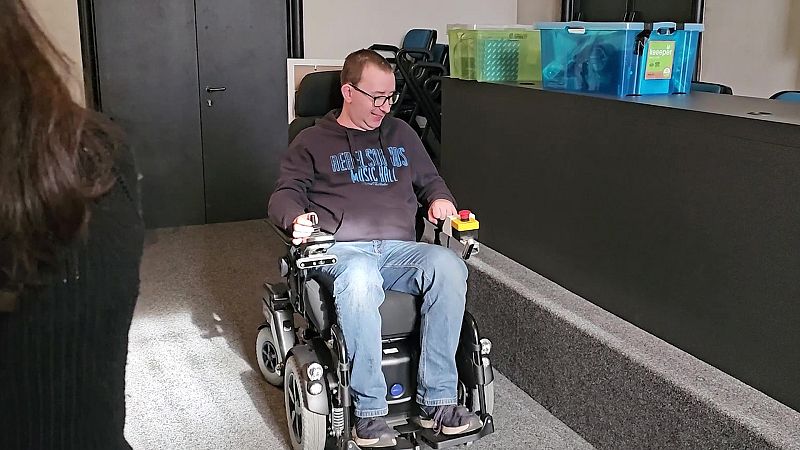This self-driving wheelchair may help people with disabilities cross the road

Researchers are developing a self-driving wheelchair with a drone assistant to help people with disabilities have more autonomy.
The REXASI-PRO (REliable & eXplAinable Swarm Intelligence for People with Reduced mObility) project uses machine learning to help control the wheelchair's motors by interpreting sensor data through a deep neural network.
A neural network is a type of artificial intelligence (AI) modelled after the human brain, where layers of connected nodes (like neurons) process data to recognise patterns and make decisions.
The project involves several partners across Europe.
The German Research Centre for Artificial Intelligence is developing prototypes of a motorised wheelchair with smart sensors, LiDAR, and 360 cameras used to map surroundings.
An Italian company, Aitek, is responsible for designing a neural network capable of detecting individuals and wheelchairs across various scenarios.
Making the system trustworthy is the ‘biggest challenge’
A team at the University of Applied Sciences and Arts of Southern Switzerland (SUPSI) is responsible for "aspects related to trustworthiness and safe operation of the wheelchair in specific scenarios".
“The big challenge that we are facing as a project team and project consortium is the hardware is there, but what we miss is the software to control the system,” Francesco Flammini, a professor in autonomous systems safety at SUPSI, told Euronews Health.
Flammini says safe and responsible AI is crucial for developing an autonomous social navigation system like this smart wheelchair.
"The biggest challenge is to ensure trustworthy AI to make the system safe," he said, to allow people with disabilities to "navigate from point A to point B".
Ethical issues and legal implications should also be considered, he said.
“Artificial vision has been developed in the last few years, and it is based on a sub-area within AI, which is known as deep learning," he said.
"The fact is that deep learning is opaque and not transparent. So decisions taken by artificial vision are not considered safe until you research a way to demonstrate that they are safe, which is what we are doing,” Flammini added.
In March, Flammini’s team tested a prototype software in a lab simulation to anticipate multiple operational scenarios.
Usually, training machine learning models requires collecting a lot of real-world data, which can be costly, hard to obtain, and might not cover rare or risky situations.
Additionally, it can raise privacy concerns because real people are involved in the data collection.
To avoid these issues, the project created a simulator that generates synthetic data, according to the SUPSI team.
In the simulator, the neural network learns to navigate the wheelchair using only the data from virtual sensors.
One scenario the team has studied extensively is the challenge of crossing a road autonomously.
Researchers built datasets that can help the system assess the danger of the situation when crossing a street without traffic lights and a zebra crossing and make accurate decisions.
Drones as an ‘extension’ of the wheelchair
According to the research team, smart drones could assist the wheelchair in mapping unknown areas and monitoring the movement of objects and people.
“This is an extension of the wheelchair. The drone will basically be part of the system and extend the viewpoint and perspective of the wheelchair,” Flammini said.
However, he acknowledged that using drones in urban environments remains a challenge, both technically and legally.
He says smaller and lighter drones may pose less of a risk to people and could become more practical for this type of future application.
The project is expected to conclude in September 2025 with a full prototype with the potential for further developments in the years to follow, such as refining the drone technology and establishing a legal framework for their use in urban settings.
“The most important implication that we can expect from this technology is to improve the autonomy and independence of disabled people so they will be free to move by themselves without the help of caregivers,” Flammini said.
For more on this story, watch the video in the media player above.
Yesterday

